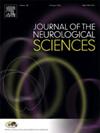The mortality of myasthenia gravis with myocarditis: A single-center retrospective study
IF 3.6
3区 医学
Q1 CLINICAL NEUROLOGY
引用次数: 0
Abstract
Background
While numerous studies have investigated the onset features of myasthenia gravis (MG) complicated with myocarditis, there are few articles focusing on the prognosis of patients with both diseases. This study aims to examine mortality in patients with MG who also have myocarditis, and to summarize the clinical characteristics of deceased patients with both conditions.
Results
A total of 91 patients with MG were included in our study, of which 19 (20.9 %) were diagnosed with myocarditis. Shorter MG duration, thymoma, history of myasthenia crisis (MC) and use of immune checkpoint inhibitors (ICIs) were risk factors for developing myocarditis in MG patients. Among the 13 myocarditis-MG patients who did not receive ICIs, 11(84.6 %) had thymoma and 5 (71.4 %) of the 7 tested were positive for titin-IgG. In all myocarditis-MG patients, 11 (57.9 %) died from myocarditis (average age 51 ± 18 years), with 9 (81.8 %) having thymoma and 5 (45 %) having a history of myasthenia crisis. Compared to the mortality rates of MC patients (16.1 %) and the general MG patients (1.8 %), the mortality rate of myocarditis-MG patients is significantly higher.
Conclusions
The study highlights that MG patients with myocarditis face a significantly increased risk of mortality. Thymoma and a history of MC were identified as potential risk factors for mortality, irrespective of prior ICI use.
重症肌无力合并心肌炎的死亡率:单中心回顾性研究
背景虽然有大量研究探讨重症肌无力合并心肌炎的发病特点,但很少有文章关注这两种疾病患者的预后。本研究旨在探讨合并心肌炎的MG患者的死亡率,并总结合并这两种疾病的死亡患者的临床特点。结果共纳入91例MG患者,其中19例(20.9%)诊断为心肌炎。MG持续时间短、胸腺瘤、重症肌无力危象史(MC)和使用免疫检查点抑制剂(ICIs)是MG患者发生心肌炎的危险因素。在13例未接受ICIs治疗的mg型心肌炎患者中,11例(84.6%)有胸腺瘤,7例检测中有5例(71.4%)titin-IgG阳性。在所有心肌炎- mg患者中,11例(57.9%)死于心肌炎(平均年龄51±18岁),其中9例(81.8%)患有胸腺瘤,5例(45%)有重症肌无力危象史。心肌炎-MG患者的死亡率明显高于MC患者(16.1%)和普通MG患者(1.8%)。结论MG合并心肌炎患者死亡风险明显增加。胸腺瘤和MC病史被确定为死亡的潜在危险因素,与既往使用ICI无关。
本文章由计算机程序翻译,如有差异,请以英文原文为准。
求助全文
约1分钟内获得全文
求助全文
来源期刊

Journal of the Neurological Sciences
医学-临床神经学
CiteScore
7.60
自引率
2.30%
发文量
313
审稿时长
22 days
期刊介绍:
The Journal of the Neurological Sciences provides a medium for the prompt publication of original articles in neurology and neuroscience from around the world. JNS places special emphasis on articles that: 1) provide guidance to clinicians around the world (Best Practices, Global Neurology); 2) report cutting-edge science related to neurology (Basic and Translational Sciences); 3) educate readers about relevant and practical clinical outcomes in neurology (Outcomes Research); and 4) summarize or editorialize the current state of the literature (Reviews, Commentaries, and Editorials).
JNS accepts most types of manuscripts for consideration including original research papers, short communications, reviews, book reviews, letters to the Editor, opinions and editorials. Topics considered will be from neurology-related fields that are of interest to practicing physicians around the world. Examples include neuromuscular diseases, demyelination, atrophies, dementia, neoplasms, infections, epilepsies, disturbances of consciousness, stroke and cerebral circulation, growth and development, plasticity and intermediary metabolism.
 求助内容:
求助内容: 应助结果提醒方式:
应助结果提醒方式:


